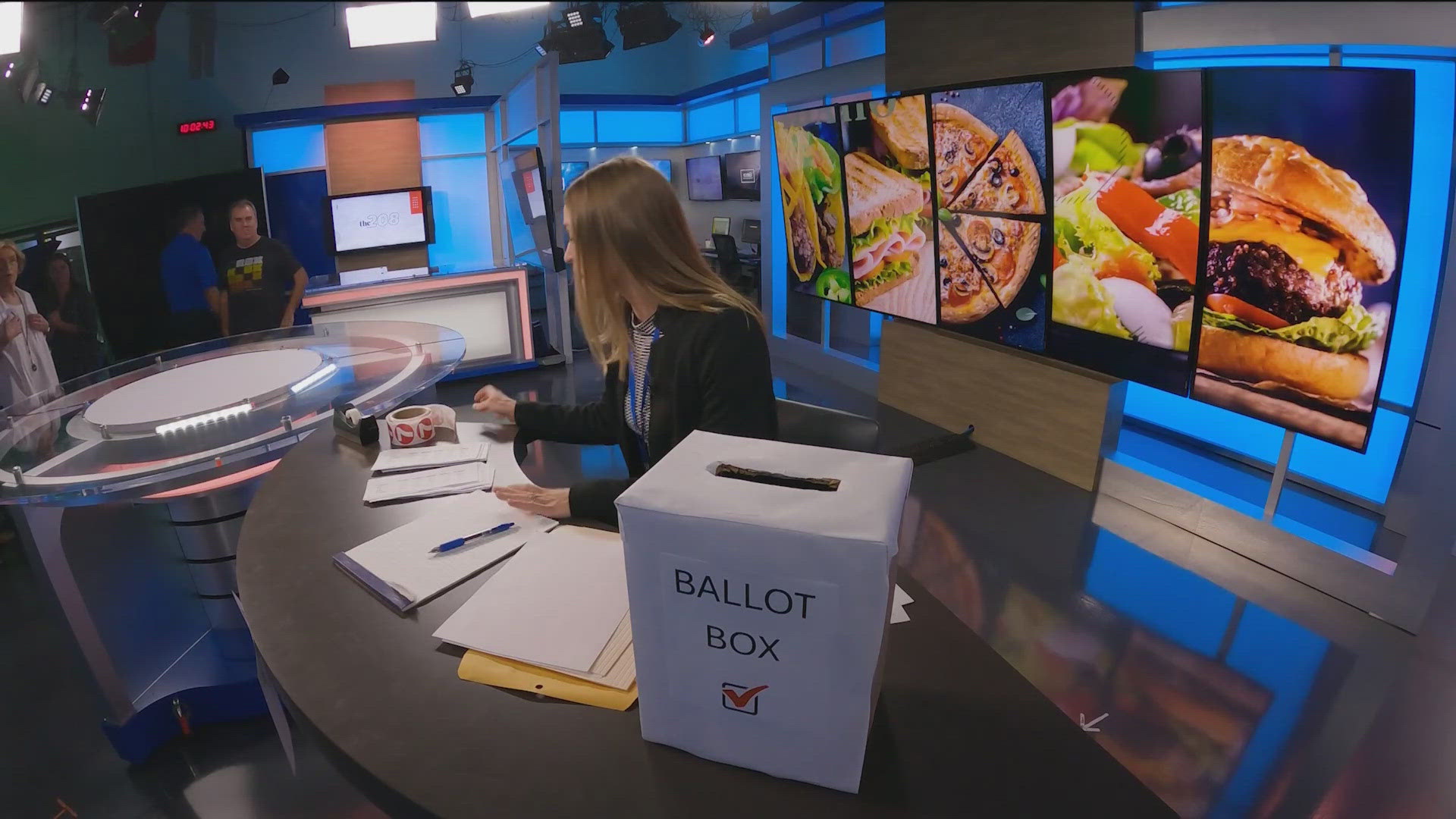BOISE, Idaho — With gurgling stomachs and parched mouths, KTVB employees lined up throughout the studio. It was time to vote. The candidates? The best food and drink for lunch.
The 208 wanted to see how ranked choice voting works in action, so the team held a mock election in the studio. Employees voted on entrée and drink options for lunch, ranking their choices from 1 to 5.
Proposition 1 will be on the upcoming Nov. 5th ballot. Proposition 1 contains two different election changes; open primaries and ranked choice voting.
If passed, open primaries would eliminate Idaho’s current party primaries. All candidates would participate in a top-four primary. Any voter can vote on all the candidates rather than the candidates within their registered party. Then the top four vote-earners, regardless of party, move onto the general election.
The second part of Prop 1 is ranked choice voting.
But what exactly is ranked choice voting?
As previously reported, ranked choice voting is when voters have the option to rank their choices in order of preference on the ballot, but aren’t required to rank all of them. This replaces our current single-vote system. If a candidate is the first choice of more than 50% of voters in the first round of counting, that candidate is the winner.
However, if no candidates get more than 50% of the vote round two begins. The candidate with the fewest votes gets eliminated. Voters who chose that candidate as their top pick have their votes redistributed to their next choice. This goes on and on, with the candidate with the fewest voters getting eliminated from the election until someone gets a super majority.
Early in counting KTVB's votes, it appeared that water was going to be a clear winner, but it wasn't so clear after the first round concluded - it did not get more than 50%. So, 7-Up was eliminated because it was the lowest vote getter. Ballots with 7-Up as their first choice were redistributed to their second choice. Water still didn’t have enough votes. Now, Pepsi was the lowest vote getter, so Pepsi voters had their second place preferences re-distributed. If a last place voter didn’t pick a second or third choice, their vote expired. Finally, water had more than 50% of the votes to win.
Then, onto food. The process continues, until one winner pulls ahead.
The 208 explains this process in depth in the video above. You can also check it out on KTVB's YouTube page here.

